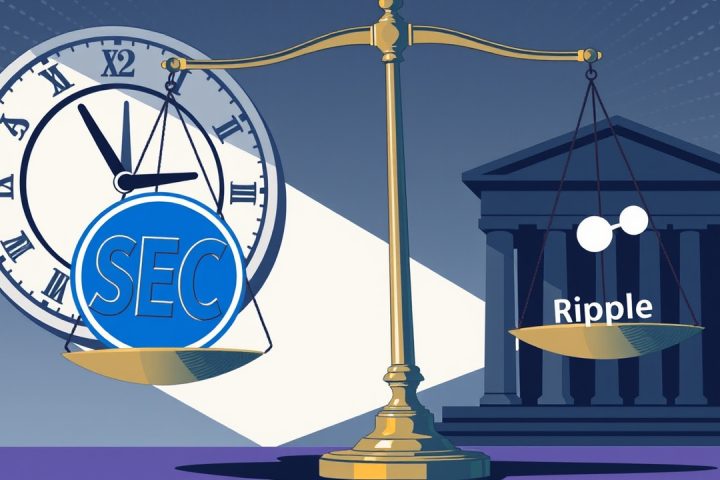Statement Summary
The Division of Corporation Finance has issued guidance on “Liquid Staking,” a specific type of Protocol Staking for crypto assets. In Liquid Staking, owners deposit their assets with third-party providers and receive “Staking Receipt Tokens” that represent their ownership and accrued rewards. This model allows holders to maintain liquidity, using these tokens as collateral in various applications.
Importantly, Liquid Staking Activities are not classified as securities under federal law; thus, participants do not need to register transactions with the SEC unless the assets are part of an investment contract. The guidance clarifies that Staking Receipt Tokens merely certify ownership of the deposited assets and do not involve entrepreneurial efforts that would classify them as securities. This statement does not extend to activities beyond administrative functions or tokens not aligning with this definition.
Original Statement
The Division of Corporation Finance, as part of an effort to provide greater clarity on the application of the federal securities laws to crypto assets, is providing its views on a specific type of Protocol Staking. The Division previously provided its views on certain types of Protocol Staking in a staff statement (the “Protocol Staking Statement”), which addressed three types of Protocol Staking: self (or solo) staking; self-custodial staking directly with a third party; and so-called “custodial staking.” This statement addresses a fourth type of Protocol Staking known as “liquid staking.”
“Liquid Staking” as used in this statement refers to a type of Protocol Staking whereby owners of Covered Crypto Assets deposit their Covered Crypto Assets with a third-party Protocol Staking service provider (such owners, “Depositors”) and in return receive newly “minted” (or created) crypto assets (“Staking Receipt Tokens”) that evidence Depositors’ ownership of the deposited Covered Crypto Assets and any rewards that accrue to the deposited Covered Crypto Assets.
As part of Liquid Staking, Staking Receipt Tokens are issued to Depositors on a one-for-one basis to the amount of the deposited Covered Crypto Assets. Staking Receipt Tokens enable their holders to maintain liquidity without having to withdraw the deposited Covered Crypto Assets from staking. For example, holders can use Staking Receipt Tokens as collateral or to participate in crypto applications, including those that can provide a return to the holder, although any such transactions are separate and independent of the actual Protocol Staking Activity itself.
Staking Receipt Tokens do not change any of the rights or obligations of the deposited Covered Crypto Assets such that the Staking Receipt Tokens are properly characterized as receipts for the deposited Covered Crypto Assets. Depositors can redeem the Staking Receipt Tokens for the deposited Covered Crypto Assets and any rewards that accrue to the deposited Covered Crypto Assets, subject to any applicable “unbonding” period.
Liquid Staking Providers
Persons can participate in such Liquid Staking through protocol-based or third-party service providers, both referred to in this statement as “Liquid Staking Providers.” The Liquid Staking Provider facilitates the staking of the deposited Covered Crypto Assets on behalf of the Depositor. The Liquid Staking Provider holds the deposited Covered Crypto Assets either in a cryptographic “wallet” that the Liquid Staking Provider controls or in a smart contract.
The Liquid Staking Provider stakes the deposited Covered Crypto Assets on behalf of the Depositor for an agreed-upon fee that reduces the amount of rewards that would otherwise accrue to the deposited Covered Crypto Assets, either using a node the Liquid Staking Provider operates or through a third-party Node Operator the Liquid Staking Provider selects. In the latter case, this selection is the Liquid Staking Provider’s only decision in the staking process, and that decision may be automated.
At all times during this Liquid Staking arrangement, the deposited Covered Crypto Assets remain in the control of the Liquid Staking Provider and the Depositor (or any subsequent transferee of the Depositor’s Staking Receipt Tokens) is intended to retain ownership of the deposited Covered Crypto Assets.
Rewards and Slashing Losses
In a Liquid Staking arrangement, rewards accrue to and slashing losses are deducted from the staked Covered Crypto Assets. In this regard, rewards are deposited with the Liquid Staking Provider, and staked Covered Crypto Assets are forfeited if there are slashing losses, in either case in a programmatic manner through self-executing computer code.
There are two methods through which Staking Receipt Tokens reflect rewards and/or slashing losses. In the first method, the Staking Receipt Token itself evidences ownership of more Covered Crypto Assets as and when rewards accrue and fewer Covered Crypto Assets as and when slashing losses occur. This means that the ratio of one Staking Receipt Token to one Covered Crypto Asset changes as rewards accrue and/or slashing losses occur.
In the second method, Staking Receipt Token holders receive additional Staking Receipt Tokens as and when rewards accrue and lose Staking Receipt Tokens as and when slashing losses occur. This means that the ratio of Staking Receipt Tokens to Covered Crypto Assets always remains one-to-one. In either case, the Staking Receipt Tokens can be redeemed with the Liquid Staking Provider for the deposited Covered Crypto Assets, subject to any applicable “unbonding” period.
Legal Classification
It is the Division’s view that “Liquid Staking Activities” in connection with Protocol Staking do not involve the offer and sale of securities within the meaning of Section 2(a)(1) of the Securities Act of 1933 or Section 3(a)(10) of the Securities Exchange Act of 1934. Accordingly, it is the Division’s view that participants in Liquid Staking Activities do not need to register with the Commission transactions under the Securities Act, or fall within one of the Securities Act’s exemptions from registration in connection with these Liquid Staking Activities.
Furthermore, the Division’s view pertains to the following Protocol Staking activities and transactions when such activities and transactions conform to the descriptions above. The Division’s view is not dispositive as to whether any specific Liquid Staking Activity involves the offer and sale of a security. A definitive determination requires analyzing the facts relating to the specific Liquid Staking Activity.
Conclusion
This statement does not extend to Liquid Staking Provider Activities that go beyond administrative and ministerial activities, or to the offer, sale, or issuance of Staking Receipt Tokens that are inconsistent with the descriptions set forth above.
For further information, please contact the Division’s Office of Chief Counsel by submitting a web-based request form.




